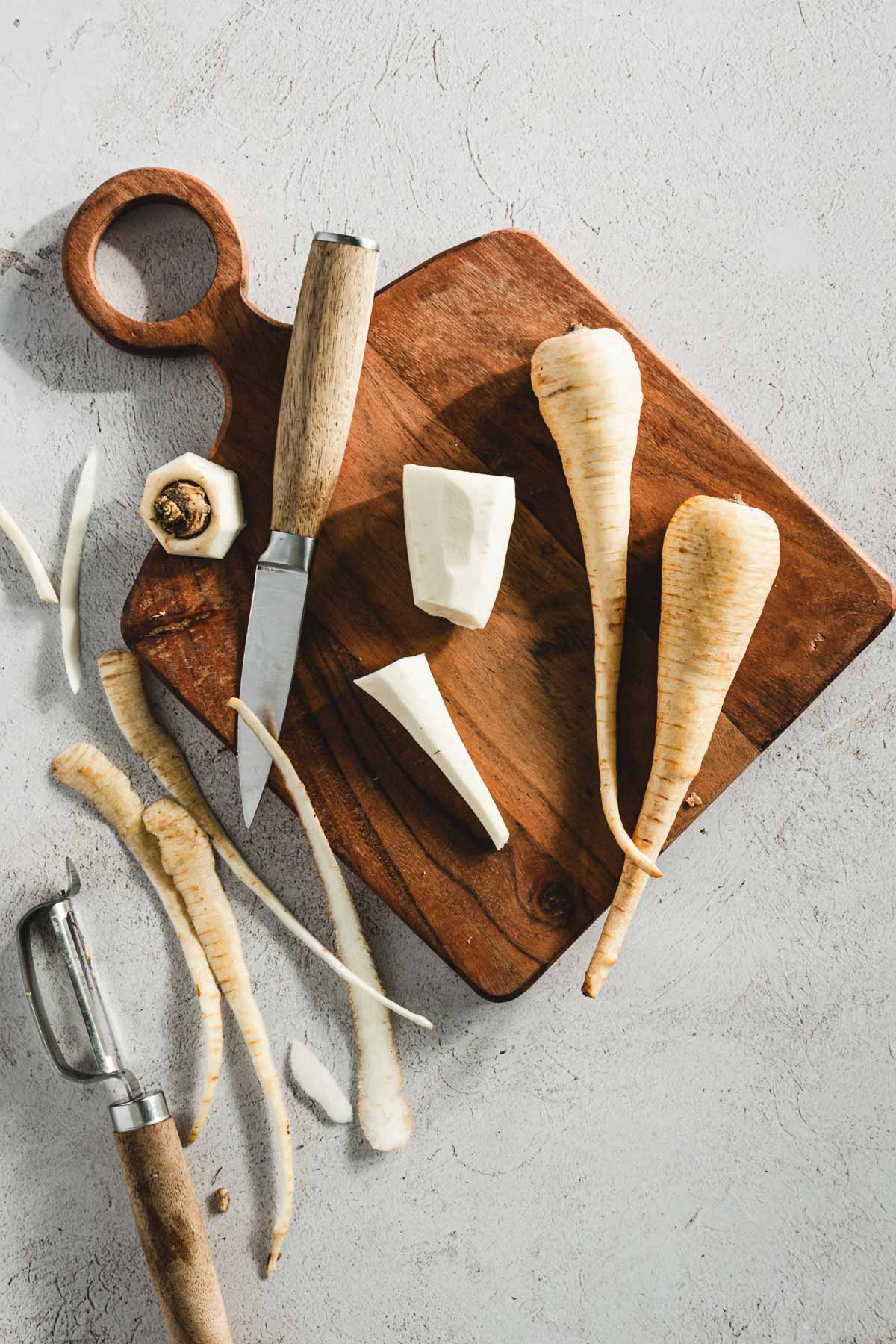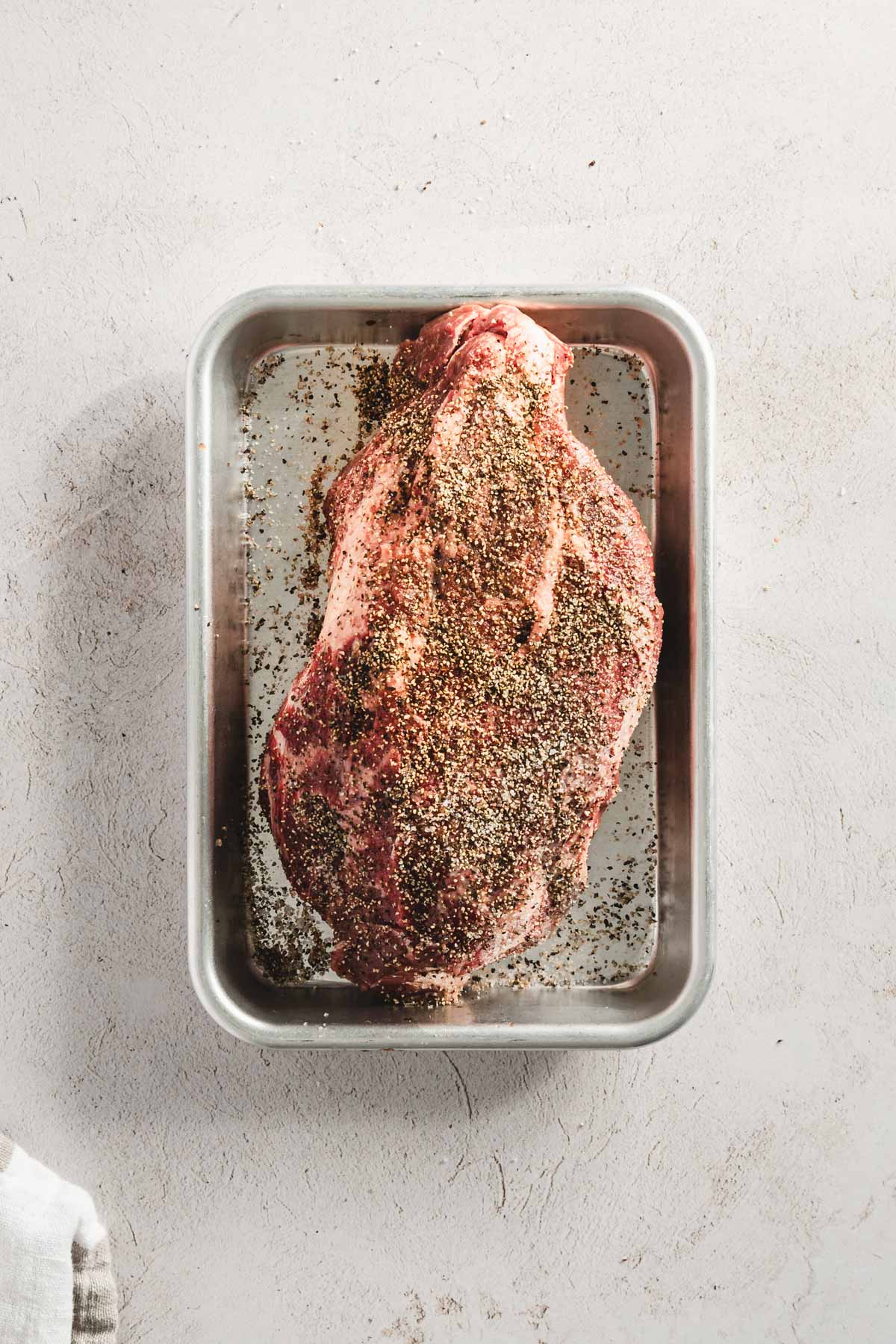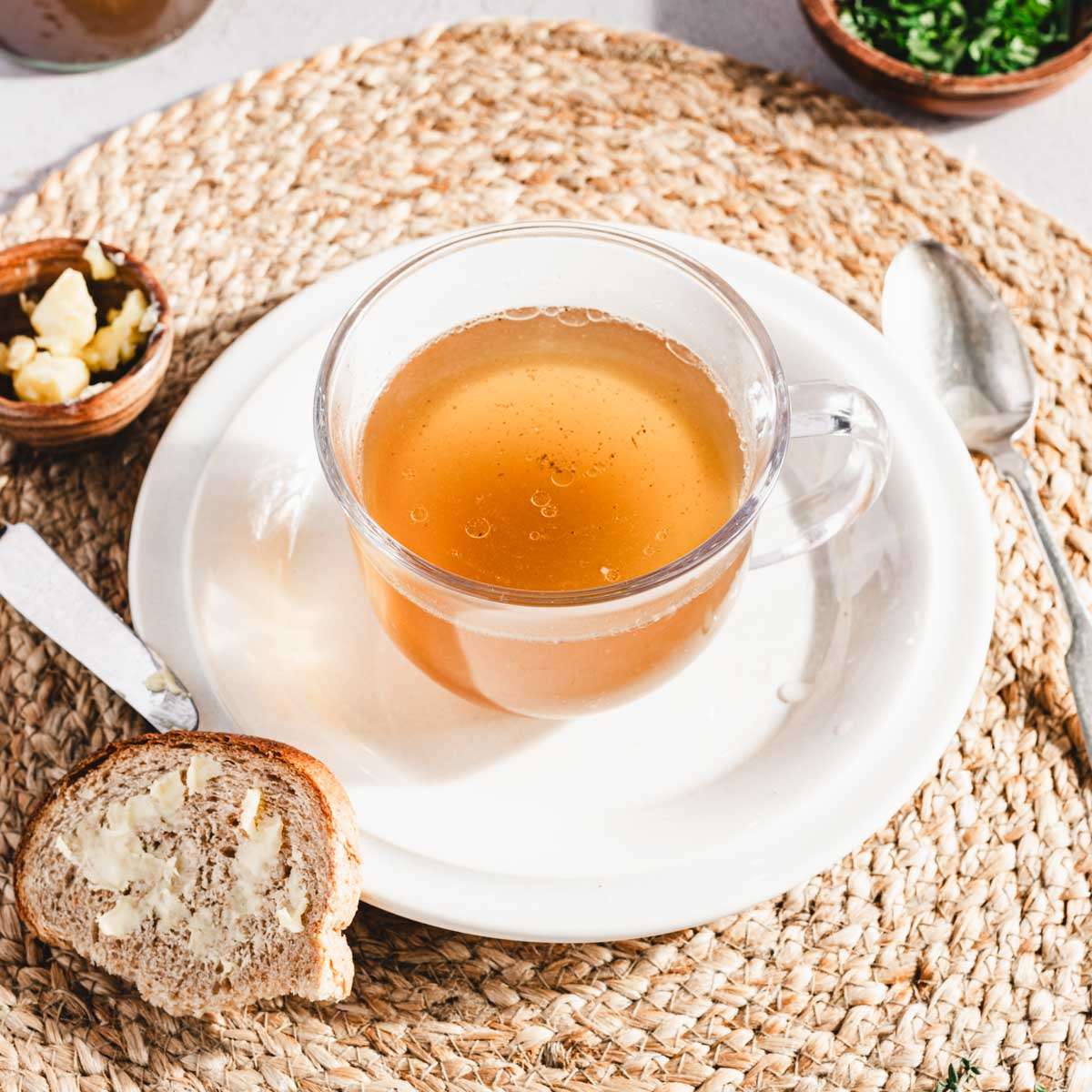Beef Broth Recipe, No Beef Bones
This beef broth (no beef bones) is liquid gold. It does not matter the season I do have Beef Broth in the fridge or freezer. This recipe offers an easy way to create a rich and savory broth that serves as a versatile base for numerous dishes. Use quality ingredients and you are guaranteed the freshness and quality of the broth.

Using beef chuck and veggies is a fantastic way to create a rich and flavorful broth without the need for beef bones. Don’t worry, we are not not compromising on the flavor one bit.
Follow the beef broth recipe tips in this post and you are guaranteed delicious, rich in beefy flavor broth at the end.
Now let’s make beef broth (without bones)!
Beef Broth (No Bones) Recipe Snapshot
EASE: Easier to make than you might think
PROS: It’s Delicious and Healthy
CONS: Absolutely none
WOULD I MAKE THIS AGAIN? On repeat
This method is perfect for those times when you want a quick and easy broth without sacrificing taste. Plus, beef chuck adds a depth of flavor that will take your broth to the next level. The best part is that you can use the cooked meat to make Beef pierogis!
Are you ready to dive into the delicious world of beef broth?
Why you will love Beef Bone Broth
#1: Rich, savory flavor, versatility in cooking
#2: Fantastic base for soups, stews, sauces
#3: Drink it as is for its nutritional benefits
#4: We control the ingredients going into the broth
Ingredients, Variations and Substitutions

Chuck Roast – is a flavorful and affordable cut of beef that adds richness to the broth. Chuck roast contains a good amount of fat and connective tissue, which adds flavor and body to the broth as it simmers. It’s a great choice for making a flavorful and hearty beef broth. Alternatively you can use shank, short ribs, or oxtail.
Water – is the base of the broth and helps to extract flavor from the beef and vegetables. You can use beef broth or beef stock instead of water for a richer flavor.
Salt – enhances the flavor of the broth and helps to season the beef and vegetables. Be careful not to add too much salt at the beginning, as the broth will reduce as it cooks and the flavors will concentrate. You can use less salt if you’re watching your sodium intake, or you can use low-sodium broth instead of water.
Pepper – adds a subtle heat and depth of flavor to the broth. Adjust the amount of pepper to taste. You can use whole peppercorns instead of ground pepper for a milder flavor.


Bay Leaves – add a subtle earthy flavor to the broth. Be sure to remove the bay leaves before serving the broth. You can use other dried herbs such as thyme, rosemary, or parsley for added flavor.
Peppercorns – add a spicy and pungent flavor to the broth. You can crush them slightly before adding to the broth to release their flavor. Use ground pepper instead of whole peppercorns for a milder flavor.
Parsnip – adds sweetness and a slightly peppery flavor to the broth. Wash and peel the parsnip before adding it to the broth. You can use more carrots or omit the parsnip altogether if you prefer.
Carrots – add sweetness and a subtle earthy flavor to the broth. Wash and scrub the carrots well before adding them to the broth. Alternatively you can use turnips or rutabagas for a different flavor.



Onion – adds sweetness and depth of flavor to the broth. Leaving the skin on the onion adds color to the broth and helps to deepen the flavor. You can use leeks or shallots instead of onion for a slightly different flavor.
Celery Stalks – adds a subtle herbal flavor and a hint of bitterness to the broth. You can use celery leaves or celery seed instead of celery stalks for a different flavor.
Garlic Cloves – adds a pungent and spicy flavor to the broth. Remember to peel the garlic cloves before adding them to the broth. You can use garlic powder or minced garlic instead of whole garlic cloves for a milder flavor.
Olive Oil – is needed to brown the chuck steak prior to making the broth.
Benefits of drinking beef broth
Protein, collagen, vitamins, and minerals, are only a few of the nutrients found in Beef Broth and all are essential for maintaining a healthy body.
Gut health, joint health, hydration and boosted immunity are the top benefits of drinking beef broth on regular basis.

Equipment you will need to make Beef Broth
Large Pot or Dutch Oven
Chef’s knife
Cutting board
Fine mesh sieve
Wooden spoon, ladle
Measuring cups and spoons
Cheesecloth optional
Top tips for making Beef Broth
Opt for a cut of beef with some fat and connective tissue. Chuck roast, beef shank, short ribs, or oxtail are great. These cuts will add flavor and body to your broth.
Brown the beef – this is an essential step, don’t skip this step. By browning (not cooking) the meat on all sides you are adding depth of flavor to the broth.
Use cold water – this allows the flavors to develop slowly and evenly.
Simmer, don’t boil – keep the broth at a gentle simmer (for 2-4 hours or longer) rather than boiling it. This allows the flavors to develop fully and the collagen in the beef to break down, resulting in a richer, more flavorful broth. Boiling can cause the broth to become cloudy and develop a bitter taste.
Skim the broth – as the broth simmers, skim off any foam or impurities that rise to the surface. This will help to clarify the broth and remove any unwanted flavors and excess of fat.
Add aromatics – like onions, carrots, celery, garlic, and herbs like bay leaves and peppercorns to enhance the flavor of the broth.
Be cautious with the amount of salt you add to the broth
Strain the broth – once the broth is done cooking, strain it through a fine mesh sieve to remove any solids. This will give you a clear, flavorful broth.

Step by Step Instructions for Making Bone Broth
Heat olive oil in a large pot over medium-high heat. Brown the chuck roast on all sides, about 4-5 minutes per side. This step adds flavor to the broth.


Add the onion, carrots, parsnip, celery, garlic, peppercorns, bay leaves, salt, and pepper to the pot with the browned beef.
Pour in the water, making sure the beef and vegetables are fully submerged.


Bring the broth mixture to a gentle simmer over medium-low heat. Skim off any foam or impurities that rise to the surface.
Cover the pot and let the broth simmer for at least 2-4 hours, or even longer if possible. The longer you simmer it, the more flavorful it will be.
Once the broth is done cooking, remove the beef and vegetables from the pot and discard them. Strain the broth through a fine mesh sieve to remove any remaining solids.
Let the broth cool completely, then transfer it to an airtight container. Store it in the refrigerator for up to 5 days or freeze it for longer storage.


Mistakes to avoid when making Beef Broth
Using high heat – boiling beef broth at high heat can cause it to become cloudy and develop a bitter taste.
Not skimming the broth – can result in a cloudy and greasy broth..
Not seasoning properly – adding salt, herbs, and aromatics like onions, garlic, and peppercorns during the cooking process enhances the flavor of the broth.
Using lean cuts of beef – those cuts don’t contain as much collagen and fat that may result in a less flavorful and less gelatinous broth.
Cooking for too short a time – rushing the cooking process can result in a weak and underwhelming broth.
You may also like:
Storage instructions, reheating
- Refrigeration:
- Allow the beef broth to cool completely before transferring it to an airtight container
- Transfer to an airtight container once it has cooled to room temperature. Refrigerate promptly to prevent bacterial growth.
- Use within 4-5 days for optimal freshness.
- Freezing:
- Allow the beef broth to cool completely before transferring it to an airtight container, leaving some space at the top for expansion.
- Label the container with the date and contents.
- Freeze the broth for up to 3 months.
- Reheating broth from the fridge
- Remove the desired amount of beef broth from the refrigerator.
- Heat it gently in a pot on the stovetop over medium heat until warmed through, stirring occasionally.
- Reheating frozen broth
- Remove the container of beef broth from the freezer and place it in the refrigerator overnight to thaw.
- Alternatively, you can thaw the broth more quickly by placing the container in a bowl of cold water, changing the water every 30 minutes until thawed.
- Once thawed, heat the broth gently in a pot on the stovetop over medium heat until warmed through, stirring occasionally



Beef Broth (no bones)
Equipment
- large stock pot, Dutch oven
- chef's knife
- cutting board
- fine mesh, sieve
- wooden spoon, ladle
- measruing cups and spoons
- cheesecloth (optional)
Ingredients
- 1 chuck roast
- 6 cups of water
- 1 tbsp salt
- 1 tsp black pepper
- 3-4 bay leaves
- onion
- 2-3 carrots
- 1 parsnip
- 2-3 celery stalks
- 3-4 garlic cloves
- 1 tsp peppercorns
- 1 tbsp olive oil
Instructions
- Heat olive oil in a large pot over medium-high heat. Brown the chuck roast on all sides, about 4-5 minutes per side. This step adds flavor to the broth.
- Add the onion, carrots, parsnip, celery, garlic, peppercorns, bay leaves, salt, and pepper to the pot with the browned beef.
- Pour in the water, making sure the beef and vegetables are fully submerged.
- Bring the broth to a gentle simmer over medium-low heat. Skim off any foam or impurities that rise to the surface.
- Cover the pot and let the broth simmer for at least 2-4 hours, or even longer if possible. The longer you simmer it, the more flavorful it will be.
- Once the broth is done cooking, remove the beef and vegetables from the pot and discard them. Strain the broth through a fine mesh sieve to remove any remaining solids.
- Let the broth cool completely, then transfer it to an airtight container. Store it in the refrigerator for up to 5 days or freeze it for longer storage.
Notes
Nutrition
Did you make this recipe?
Tag me @sylwiavaclavekphotography or tag me using #myomnikitchen so I can see your creations! You can also leave a comment below!

Conclusion
This beef broth recipe offers an easy way to create a rich and savory broth that serves as a versatile base for numerous dishes. By opting for beef chuck instead of traditional beef bones, this recipe simplifies the process while maintaining the beefy flavor. Whether you’re using a stock pot, slow cooker (aka crock pot), or an Instant Pot, the method allows for deep flavor extraction, yielding a very rich broth. Use it to enhance anything from a simple beef stew to a robust onion soup.
So, go ahead and grab your large pot or Dutch oven, gather your beef, vegetables, and a few simple aromatics. It is so easy to transform these ingredients into a golden broth that can serve as the nutritious base in countless delicious recipes. Whether it’s enhancing the flavor of a beef soup or serving as a base for more complex dishes, this homemade beef broth recipe showcases the richness and depth that simple ingredients can offer when cooked with care.
Are you going to make bone broth (no bones)?
Let me know in the comments below!
Homemade Beef Broth FAQ
Can I use store-bought beef broth instead of making my own?
Yes, you can use store-bought beef broth as a substitute for homemade broth. However, homemade tends to have a richer flavor and fewer additives.
Can I freeze beef broth?
Yes, beef broth can be frozen for up to 3 months. Allow it to cool completely before transferring it to an airtight container, leaving some space at the top for expansion.
Can I make beef broth in a slow cooker or Instant Pot?
Yes, you can make beef broth in a slow cooker (aka crock pot) or Instant Pot. Simply follow the same steps for browning the beef and vegetables, then cook on low for 8-10 hours in a slow cooker or on high pressure for 2 hours in an Instant Pot.
Using a slow cooker or Instant Pot for making broth is beneficial as it allows for long, slow cooking without needing to monitor the stove, ensuring flavors fully meld and develop. Additionally, the slow cooker or Instant Pot method is especially convenient for those with busy schedules, as you can set it in the morning and come home to a perfectly cooked broth ready to be used or stored.
How long does beef broth last in the refrigerator?
Homemade beef broth will last for up to 5 days in the refrigerator when stored in an airtight container.
Can I use beef bones instead of beef chuck to make broth?
Yes, you can use beef bones to make broth. However, using beef chuck adds flavor and body to the broth, so you may need to simmer the broth longer if using beef bones to achieve the same depth of flavor. Check out this Beef Bone Broth Recipe if you prefer using beef bones to make the broth.
Is beef broth the same as beef stock?
No, beef broth is not the same as beef stock. While both beef broth and beef stock are made from simmering beef bones, broth is typically made with meat, and stock is made with bones. Due to the beef bones, broth tends to have a richer flavor and thicker texture than stock. However, both homemade beef broth and homemade beef stock are great to have handy in your kitchen for various purposes!
Making your own homemade beef stock allows you to control the salt content and avoid the preservatives often found in store-bought versions. Additionally, homemade beef stock can serve as a robust base for enriching the flavors of stews, sauces, and gravies, enhancing your culinary creations with a depth of flavor that can’t be matched by commercial products.
Making your own homemade beef broth ensures that you can use quality ingredients and adjust flavors to your preference, free from artificial additives and excessive sodium. Furthermore, homemade beef broth provides a wholesome and nutritious base for soups, risottos, and other dishes, offering a homemade touch that elevates everyday cooking.
Can I use different vegetables in beef broth?
Yes, you can customize your beef broth by adding different vegetables such as leeks, mushrooms, or bell peppers for added flavor.
How do I store broth in ice cube trays?
#1. Cool the Broth: Allow your broth to cool to room temperature after cooking.
#2. Pour into Ice Cube Trays: Ladle or pour the cooled broth into clean ice cube trays. Avoid overfilling to allow room for the liquid to expand when frozen.
#3. Freeze: Place the trays in the freezer and allow the broth to freeze solid, typically about 3-4 hours or overnight.
#4. Transfer to Freezer Bags: Once the broth cubes are frozen, promptly remove them from the trays and transfer them to airtight freezer bags or containers. This helps prevent freezer burn and preserves the quality of the broth.
#5. Label and Store: Label the bags with the date and type of broth. Stored properly, broth cubes can last for up to 3 months in the freezer.
If I like homemade beef broth (without bones), what other recipes do you recommend?
If you like homemade beef broth (without bones), then be sure to try chicken bone broth (made with chicken bones) and beef bone broth (made with bones).








I had never made broth like this! I always thought you needed bones but this recipe worked great.
Thanks Linda. So happy you found this recipe helpful and discovered a great alternative to bone broth.